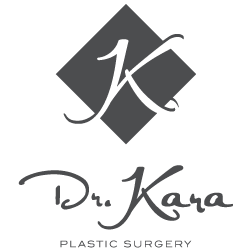Fat Grafting for Your Breasts
Did you have a breast augmentation but are unsatisfied with the gaps left by implants? Do you wish to correct deformities or an asymmetrical outcome from your previous breast augmentation surgery from another surgeon?
Fat grafting is becoming a very popular addition to breast augmentation surgeries. The process of fat grafting allows the surgeon to fill in gaps that are left when augmenting breasts with implants. For example, in some cases, breasts may not be symmetrical and need additional volume to improve the appearance. In other instances, there are deformities from previous surgeries, such as difference in shape, capsular contracture, rippling and double bubble (a second bulge at the crease of the breast).
Fat grafting is a process where fat from other areas of the body is removed and then injected into the breast to augment or to correct deformities in shape, size, or contour etcetera. The process involves liposuction of areas of the body where you would like to reduce the fat tissue. The fat is separated from the blood, water and oil through a centrifugation process. Blood will also be removed from your body and separated in a separate process and combined with the harvested fat before being injected in your body.
In essence, you are able to get liposuction and a breast augmentation or correction in one procedure. You can remove fat from the abdomen, thighs, hips, legs, or other areas where you carry stubborn fat that is suitable for harvesting.
Fat grafting (also known as fat transfer) is a safe and minimally invasive procedure. It can be used to augment breasts with or without implants, correct issues with previous breast implant surgeries and reduce fat in targeted areas of the body. This procedure can also be beneficial to reconstruct breasts following a lumpectomy (surgery to remove a lump), for example.
One concern is the absorption rate of the fat transfer in the body. In a study of 26 patients, the patients relied on fat grafting to visually correct deformities or an asymmetrical outcome following a previous breast enlargement surgery. The total amount of fat transferred was 160 cc to 360 cc with an average of 280 cc per procedure. The resorption rate varied but the median rate was 42.6 mL, with 25-28.9% absorption rate. The study concluded that the more volume injected, the more volume that was absorbed. Patients had a very high satisfaction rate, with 83.3% of the patients rating the procedure as excellent for correcting their previous breast augmentation surgery.1
1 Sforza , M and K. Andjelkov, R. Zaccheddu, R. Husein and C. Atkinson (2016) “A Preliminary Assessment of the Predictability of Fat Grafting to Correct Silicone Breast Implant-Related Complications“ Aesthetic Surgery Journal 2016, Vol 36(8) 886–894.

